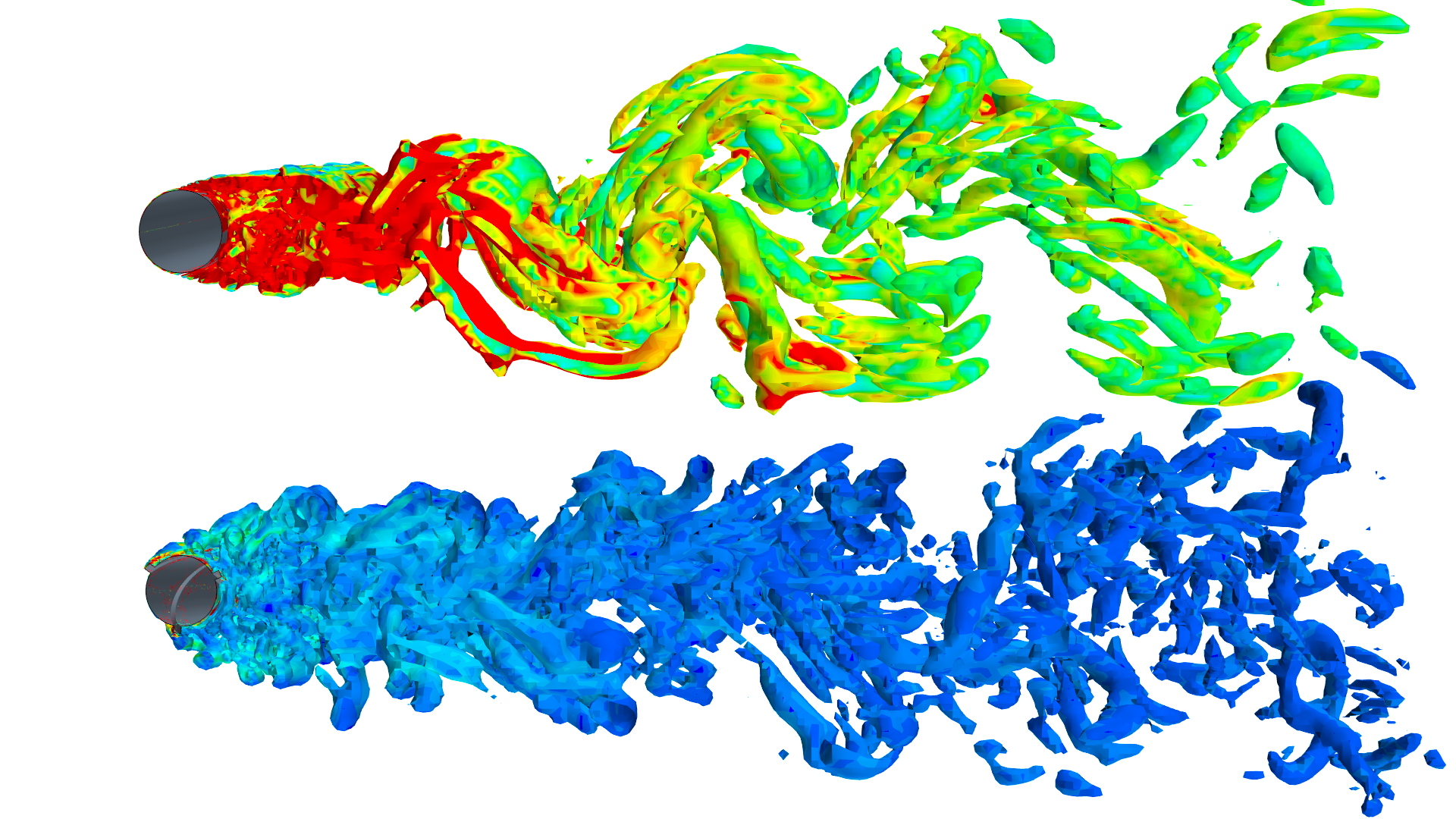
Thermowells, chimneys and stacks all represent the physical problem of a blunt body in crossflow. Depending on the diameter of the body and the velocity of the flow, they can be subject to the Von-Karman street shedding phenomenon, leading to Vortex-induced Vibrations (VIV). Oscillating forces induced by the vortex shedding limit the fatigue life of the items and in some cases can lead to resonance failure.
FE Consultants (FEC) were asked to design a Thermowell for a transfer line in an Ammonia plant subject to 815°C mixed hydrogen gas flow at 70ms-1. The line was fabricated, heat-treated and refractory cast. The geometrical limitations of the thermowell were dictated meaning a significant length and limited diameter, resulting in a low natural frequency. Compliance with ASME PTC 19.3 was not possible given the constraints. The thermowell natural frequency could be shifted to an acceptable range with the use of a vibration collar. However, the high temperature of the line made the fit, tolerancing and expansion characteristic challenging. Several instrument vendors were approached, with all proving unsuitable due to technical limitations or unsuitable lead time.
FEC worked with the client and determined a feasible solution using a custom machined helical strake thermowell design. Helical strakes are widely referenced in literature to diminish the effects of vortex-induced vibration through references such as ASME STS or CICIND. However, these references were for large scale items such as chimneys and stacks. Application to the specific flow problem was not straightforward.
An analysis was undertaken to prove the effectiveness of the helical strakes by comparison with a plain cylinder in cross flow. Several strake geometry designs were trialled to determine the most effective arrangement.
The assessment was completed using Computational Fluid Dynamics (CFD), considering three-dimensional transient flow past the two configurations. Results of the analysis confirmed that the plain cylinder, under the specified design conditions, was subject to vortex shedding. Results were in close agreement with theoretical and experimental values.
The selected helical strakes proved to be an effective solution suppressing vortex induced vibration on the thermowell.
For this project, FEC took a physical problem with no obvious engineering outcome and delivered a final solution for the client. Activities included:
- ASME PTC 19.3 review for a range of designs
- Literature review
- Review of vibration collar options and frequency prediction
- Concept development and proof of design for a helical thermowell
- Detailed fabrication and machining drawings for the Inconel 800H thermowell assembly
- Final approved design suitable for implementation.
CFD removed the limitations associated with available standards. It provided a path to solve the problem, which didn’t involve extending the shutdown or re-work to the transfer line and compromising the newly cast refractory.

Just curious, what are the installation details, pipe size and wall thickness, thermowell dimensions mat’ls of construction
The temperature and geometrical limitations of the project made the installation details critical for the intended fatigue life of the system. FEC designed the thermowell with sliding fit tolerances which ensured practical assembly, while reducing the effective bending length and increasing the natural frequency at the same time. Thermowell bar is made of the Ni-Cr alloy which allowed us to use differential thermal properties to further improve the fit between the pipe and thermowell and reduce risk of vibrations when subject to high-temperature process flow. Thermowell is flange-mounted to the pipe, with some details shown on the last photo below the article on our website.
Was the fluid-structure interaction included in the CFD calculations, and what was the range of Reynolds numbers considered.
In this particular analysis fluid-structure interaction was not included. Main objective of this assessment was to determine how effective helical strakes can diminish vortex shedding and we based our comparison on the frequency and vortex structure rather than vibration amplitude. Results of the CFD analysis were then compared with the natural frequency of the structure to ensure appropriate safety margin. Thermowell was subject to subcritical flow regime (Re < 3 E5), with partially laminar boundary layer and fully turbulent wake.
Did you perform a thermal analysis (reponse time, etc.) of the installation. Often the length dictated by the process designers, is based on a notion that only the temperature in the pipe center is acceptable.
Hi Dave, thanks for your query. In this instance we didn’t complete a thermal analysis. A shorter thermowell would help us immensely in the mechanical design!
I think that for a steady condition, insulated pipe and well developed flow, being at the geometric centre isn’t critical. Process teams are probably justified if they have transient thermal conditions, uninsulated pipe, poorly developed flow / upstream obstructions. Also depends why they want the temperature data in the first place.
This is a good idea for a professional development project, we might do some test cases and publish the results. We’ll put them back up here if we get it done.
The CFD simulations (RANS) found that even with minimal exposure inside the pipe ID, the measured thermal response and accurracy, relative to any gradients in the pipe flow were minimal (less than 0.5%).
Where the temperature gradients are extreme, and the flow is not turbulent, multiple sensors are likely required, as a single intrusive measurement would be inadequate.
By the way, the design you developed to meet the customers needs is excellent.